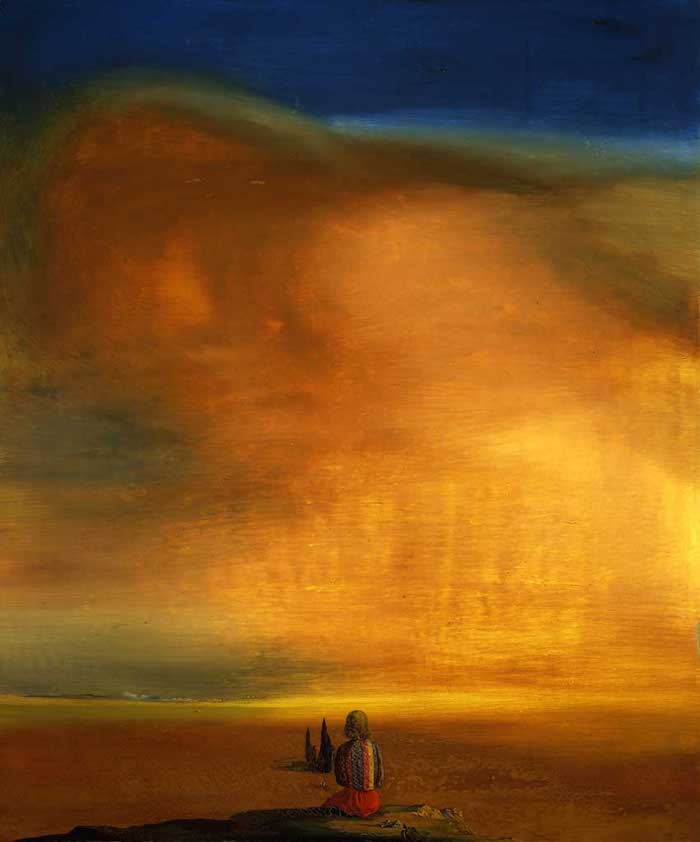Sugar Sphinx, 1933 by Salvador Dali

Sugar Sphinx is one of a series of paintings in which Gala appears in a multicolored, richly textured jacket with her back to the viewer. Seated in the foreground center on a promontory overlooking a vast plain at sunrise or sunset, Gala is a paragon of concentration and composure. In the distance two cypress trees, traditional symbols of death, stand on either side of a walled enclosure, framing a wheelbarrow and a couple at prayer that is derived from Jean Francois Millet's Angelus. Given Dalfs "paranoiaccritical" interpretation of Millet's celebrated painting as a scene of predatory aggression, sexual ambiguity, and death, the enclosure may well be a cemetery. Indeed, in Dali's reading, the archetypal couple mourn the death of their dead son, whom Dali imagines to be buried beneath a basket in the foreground of the painting. The wheelbarrow is in turn viewed as a symbol of desire, and the female peasant as a combination Oedipal mother and sphinx.
The title of the painting plays on these multiple associations. Half woman, half lion, the enigmatic sphinx combines aspects of both male and female - the devouring mother and the castrating father. In the classical myth of Oedipus and the Sphinx, the hapless victim who is unable to solve the creature's riddle meets with death, a fate that Oedipus, in solving the riddle, is able to avoid. Dali in turn projects these associations of terror, death, and desire onto Gala, who, as the title of the painting suggests, is also sweet and seductive, the manifestation of Dali's masochistic fantasies of self-destruction through love.























